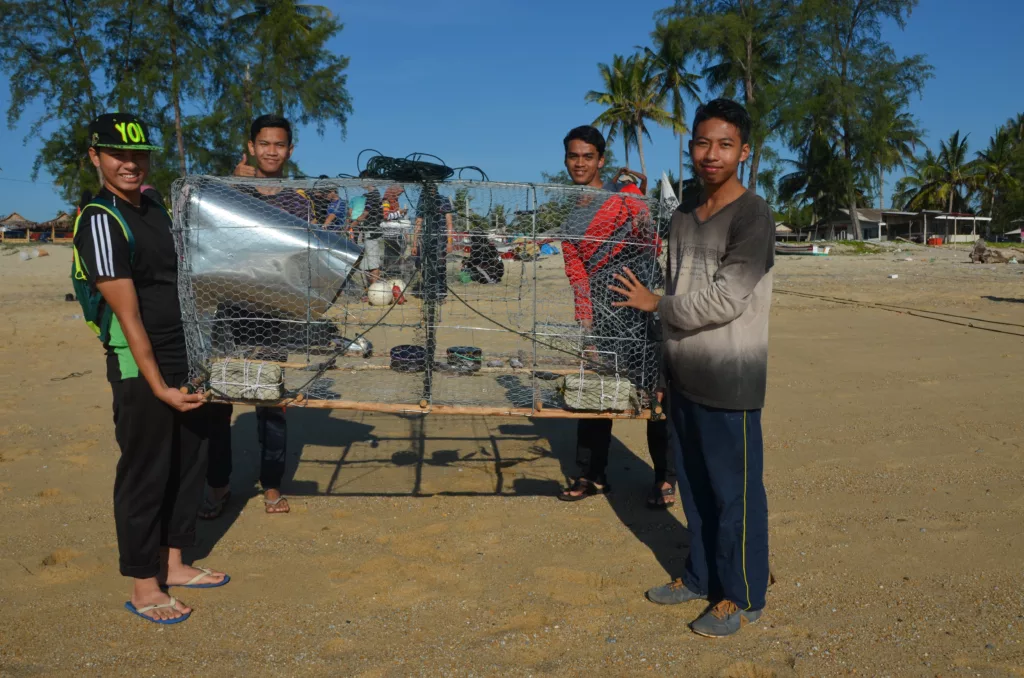UMT | Portal Rasmi Universiti Malaysia Terengganu

Tuesday, 02/06/2020
Share This Article :
According to the Food and Agriculture Association of the United Nations, 75% of the world fish resources have been overexploited. More shockingly, a scientific study by Canadian and American fishery experts has indicated that the world fishery stocks will be depleted by 2048.
The minimum protein needed by average humans is 0.8 gram per kilogram of weight per day. In a year, humans need a minimum of 29 kilograms of protein. But did we know that a cheap source of protein is from fishery? The fishery resources can be obtained from the sea or aquaculture.
Malaysia is a maritime nation, and it is surrounded by seas spanning 614,000 square kilometres. As such, the fishery sector contributes roughly 1.5% to the country’s Gross National Product. The sector also provides employment opportunities to 130,645 Malaysians. The fishery sector’s contribution towards the nation’s economy is apparent.
Universiti Malaysia Terengganu (UMT), with a host of experts in marine science and aquatic resources, has been tasked with making the depleting fishery resources more sustainable. In 2018, Malaysia lost 6 billion ringgit because of illegal, unreported, and unregulated (IUU) fishing, and large percentage (43%) of small fingerling fish trapped in the trawl nets.
In Malaysia, the buffer zone set for maintaining fishery resources sustainability is along the coastal areas, specifically 0-1 nautical miles and 1-8 nautical miles. These areas are rich with nutrients and planktons for fish fry and fingerlings. These habitats must be managed well based on in-depth and detailed studies.
UMT’s location by the sea allows its researchers to get close to the fishermen in the nearby community. In Terengganu alone, there are 1,812 fishermen registered with the Malaysian Department of Fisheries, while there are over 400 registered fishermen around the university.
Their source of income is the fish resources near the coastal lines. According to the data from the Malaysian Department of Fisheries, in 2017, there were 19,507 drift nets in Malaysia. Most of these were used by fishermen who owned small boats with trolling motors.
The coastal erosion during the monsoon season has affected the geography of the coastal lines near UMT. The breakwaters built with giant rocks to protect the coastal areas have indirectly changed the fishery ecology there. This has made it difficult for the fishermen to earn their income.
Among the issues faced by the fishermen are decreasing quantity of fish, decreasing sizes of catch, changes in fish species near the coastal lines, less effective fishing equipment, and uncertainty on fish hotspots by size and species.
To help the fishermen, UMT researchers built artificial shelters and reefs to replace the natural habitats destroyed by the coastal erosion. These were placed at locations with potentials to become new habitats for fishery resources. After two years, several commercial fish species were sighted near these structures.
Normally, the placed artificial shelters and reefs will initially promote the growth of aquatic plants, such as corals. Coral reefs will attract planktons, source of food for small fish. When schools of small fish populate the areas, bigger sized fish will be bound to follow.
The constant problem faced by the fishermen when at sea is to determine suitable hotspots by size and species. Most coastal zone fishermen determine the locations using several observations: the presence of the dolphins surrounding the pelagic fish, the presence of seagulls, and the presence the fish near the surface. However, these techniques not only take a long time but also lead to high cost, especially for fuel.
At the buffer zone, the coastal fishermen use fish and crab traps, but they mostly use the drift nets in their operations. There are 33,502 fishermen using drift nets in Malaysia. The figure is higher compared to other fishery equipment like fishing gear (6,318), trawl nets (5,875), and fish traps (1,163).
The effectiveness of drift nets depends entirely on the fishermen’s ability to locate fish hotspots. Some fishermen identify the hotspots by diving into the water and locate the area from underneath. However, this technique is never taught to other fishermen; it is usually passed down from one generation to another.
UMT researchers have helped the fishermen identify fish hotspots by using a fishfinder instrument. After the data collected by a fishfinder is analyzed, fish hotspots by species and sizes can be identified more accurately. This helps to improve the fishermen’s economic status; at the same time, it promotes the sustainability of fishery resources.
Drift nets of different mesh sizes were joined together to reduce by-catch. These nets were placed in strategic locations, which saved the fishermen’s time finding the location of commercial fish. Some nets were replaced with those of different materials that are less injurious to fish if they ever get strangled.
Beside the greenhouse effects, rising sea levels, and shifting weather patterns, the construction of breakwaters has affected the fishery habitats and compositions along the areas near UMT. It has also indirectly affected the effectiveness of the fishery equipment. UMT researchers have helped the fishermen by modifying the sizes and forms of the fishery equipment. Some were modified to be foldable, making them easier to be carried in large quantity for use during operations.
The scientific studies by UMT researchers have helped the local fishermen improve their fishery activities, which has in turn improved their socioeconomic conditions. The synergy between UMT researchers and the community of fishermen can positively impact the sustainability of fish resources.
*The writer is Senior Lecturer in Fishery Equipment Technology and Fishery Ecology at the Faculty of Fisheries and Food Sciences, Universiti Malaysia Terengganu.